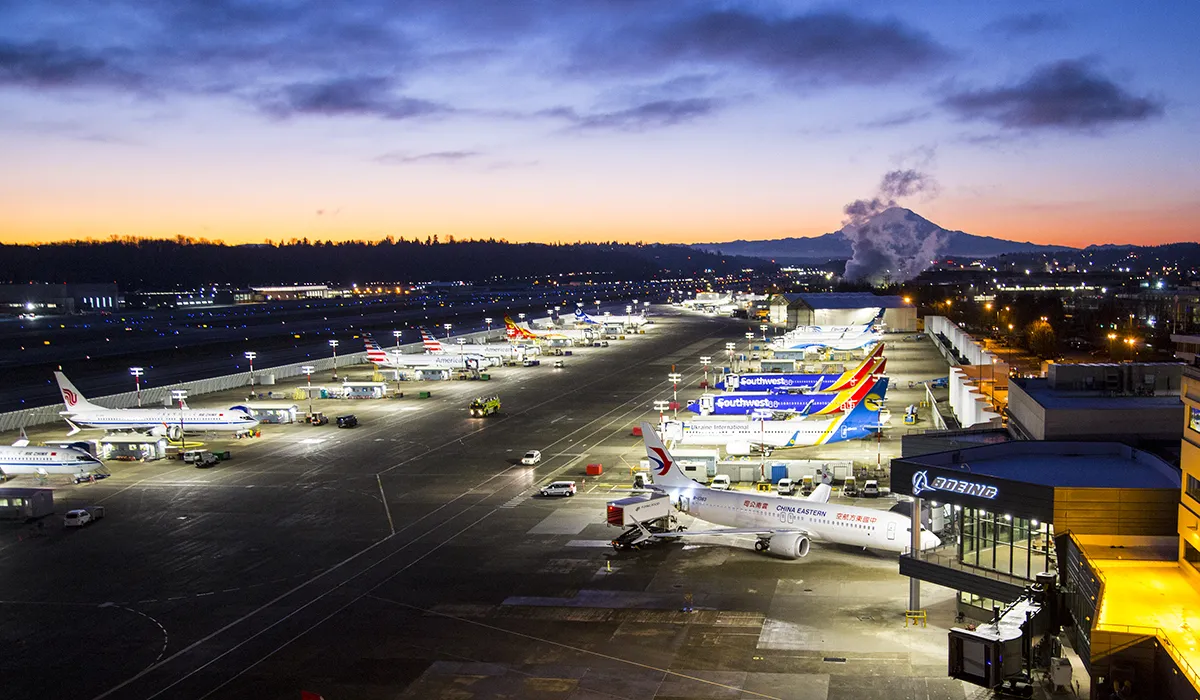
BOEING FORECASTS 41,000 NEW AIRCRAFT NEEDED BY 2041
Jul 17, 2022

Boeing projects that the global aviation market will require approximately 41,000 new aircraft by the year 2041. This forecast is driven by increasing passenger demand, the need for fleet modernization, and the expansion of air travel in emerging markets. The report highlights the growing importance of sustainability, with a shift towards more fuel-efficient models as airlines seek to reduce their environmental impact. Boeing's analysis underscores the significant role of the commercial aviation sector in connecting people and economies, while also addressing challenges such as supply chain constraints and evolving regulatory frameworks.
The aviation industry is poised for substantial growth in the coming decades, with "Boeing's" latest forecast predicting a demand for "41,000 new aircraft" by 2041. This projection comes amid increasing global travel demand, driven by a rising middle class in emerging markets and a resurgence in air travel post-pandemic. Understanding the dynamics of this forecast is crucial for stakeholders in the aviation sector, including manufacturers, airlines, and investors.
Global Demand Drivers
Several factors contribute to the anticipated demand for new aircraft. The primary drivers include:
- Growing Middle Class: A significant increase in disposable income in countries such as India and China will lead to more people traveling by air.
- Urbanization: Rapid urbanization in developing regions is expected to create a higher demand for air travel as more people move to cities.
- Tourism Growth: The global tourism market is projected to expand, further boosting the need for additional aircraft.
- Fleet Modernization: Airlines are looking to replace older, less efficient aircraft with newer, more fuel-efficient models to reduce operational costs and meet stricter environmental regulations.
Aircraft Demand by Region
Boeing's forecast highlights regional differences in aircraft demand, reflecting varying economic conditions and travel patterns. The following table summarizes the projected delivery of new aircraft from 2022 to 2041 by region:
| Region | Aircraft Deliveries (2022-2041) |
|---|---|
| North America | 13,000 |
| Europe | 8,500 |
| Asia Pacific | 18,000 |
| Latin America | 3,000 |
| Africa | 1,500 |
The "Asia Pacific" region is expected to lead the demand for new aircraft, driven by the rapidly growing economies and a significant increase in air travel. In contrast, regions like "North America" and "Europe" will see more modest growth as their existing fleets are upgraded and modernized.
Types of Aircraft in Demand
The forecast also indicates a shift in the types of aircraft that will be in demand. The following categories are highlighted:
- Narrow-body Aircraft: These aircraft will dominate the market, accounting for nearly 70% of deliveries. Their efficiency and suitability for short to medium-haul flights make them ideal for low-cost carriers.
- Wide-body Aircraft: As international travel increases, the demand for wide-body aircraft will also rise, with about 25% of the forecasted deliveries falling into this category.
- Freighters: The growth of e-commerce and air cargo transport is driving the need for dedicated freighter aircraft, which will make up the remaining 5% of the forecasted new aircraft.
Environmental Considerations
As the aviation sector grows, so too does its responsibility toward the environment. Airlines are under increasing pressure to reduce their carbon footprint, leading manufacturers like Boeing to focus on developing more sustainable aircraft technologies. Key initiatives include:
- Fuel Efficiency: New aircraft designs are being engineered to be more fuel-efficient, which not only reduces operating costs but also minimizes environmental impact.
- Alternative Fuels: The industry is exploring the use of sustainable aviation fuels (SAF) that can significantly lower greenhouse gas emissions compared to traditional jet fuels.
- Innovative Technologies: Boeing and other manufacturers are investing in research and development to create next-generation aircraft with reduced noise and emissions.
Implications for Stakeholders
The forecast of "41,000 new aircraft needed by 2041" has significant implications for various stakeholders in the aviation industry:
- Airlines: Carriers will need to adapt their strategies to accommodate new aircraft deliveries, including fleet management and training for pilots and maintenance crews.
- Manufacturers: Companies like Boeing must ramp up production capabilities and innovate to meet market demands while ensuring sustainability.
- Investors: Understanding trends in aircraft demand can help investors make informed decisions regarding investments in aviation-related stocks and funds.
Conclusion
The forecast from Boeing emphasizes a robust future for the aviation industry, with a demand for "41,000 new aircraft" by 2041. As global travel continues to rise, stakeholders must consider the implications of this growth, from environmental responsibilities to technological advancements. The aviation sector is on the brink of transformation, and those involved must remain agile to capitalize on the opportunities ahead.
Related Articles

Explore Thailand: The Best Islands to Visit for Paradise, Adventure, and Relaxation

The Ultimate Guide to the Best Islands in Thailand for Your Next Getaway

Do babies need passports? How to get a passport for a newborn

How to get a U.S. passport fast: here’s how to expedite the process

What is Mobile Passport Control: 5 reasons why you should use it

SENTRI vs. Global Entry: A detailed guide

Do you need a passport to go to the Bahamas? Let’s find out

Do you need a passport to go to Mexico? A detailed guide

Do you need a passport to go to Canada? We got the answer

Do You Need a Passport for a Cruise: An Essential Travel Guide

Booster Seat Requirements: All the Rules to Follow in Your Rental Car

What Are the World’s Most Powerful Passports, and How Does Yours Rank?

How to Take a Passport Photo at Home: A Helpful Guide

You've got to have heart! Southwest's new livery

Your opinion: Should water be free on low cost carriers?

Young women bolder than guys as solo travellers
